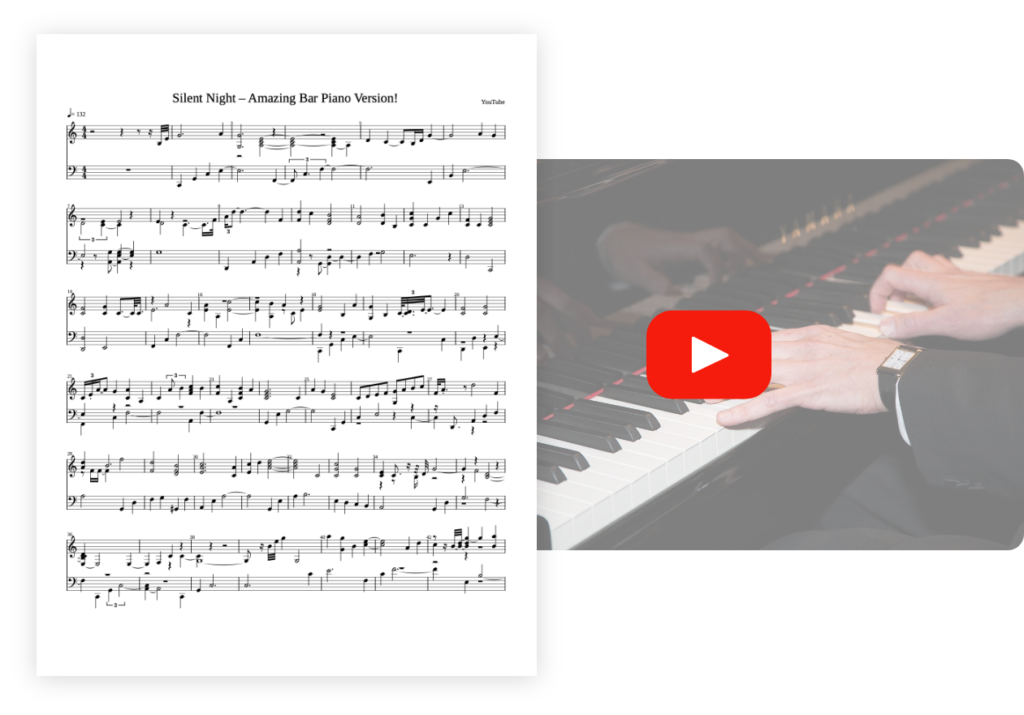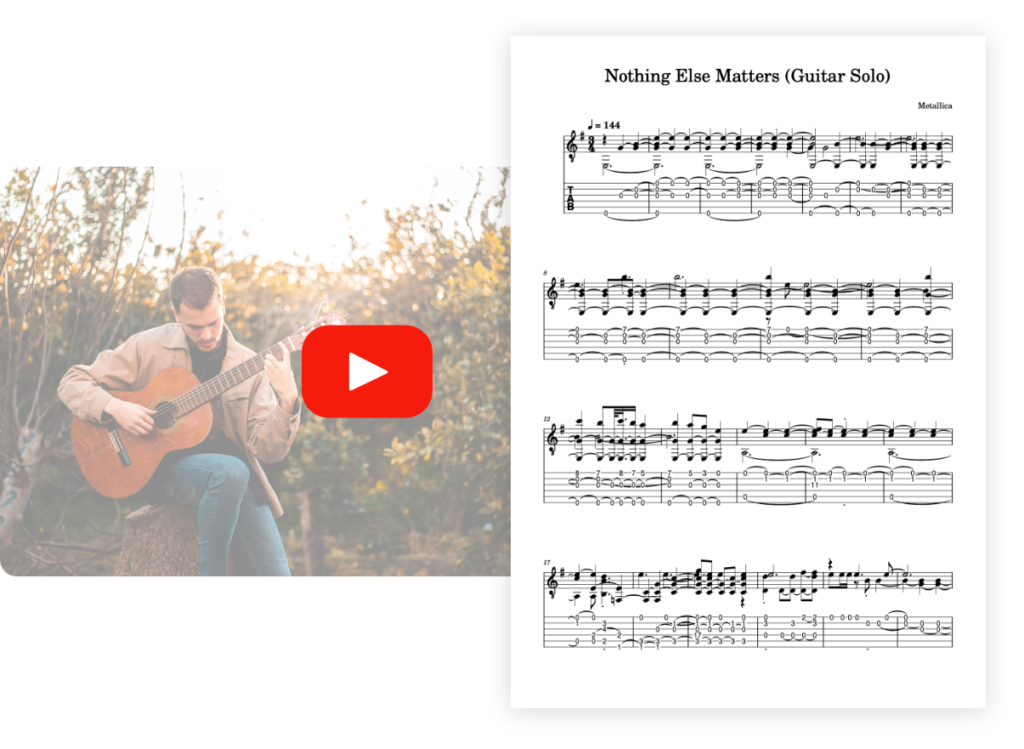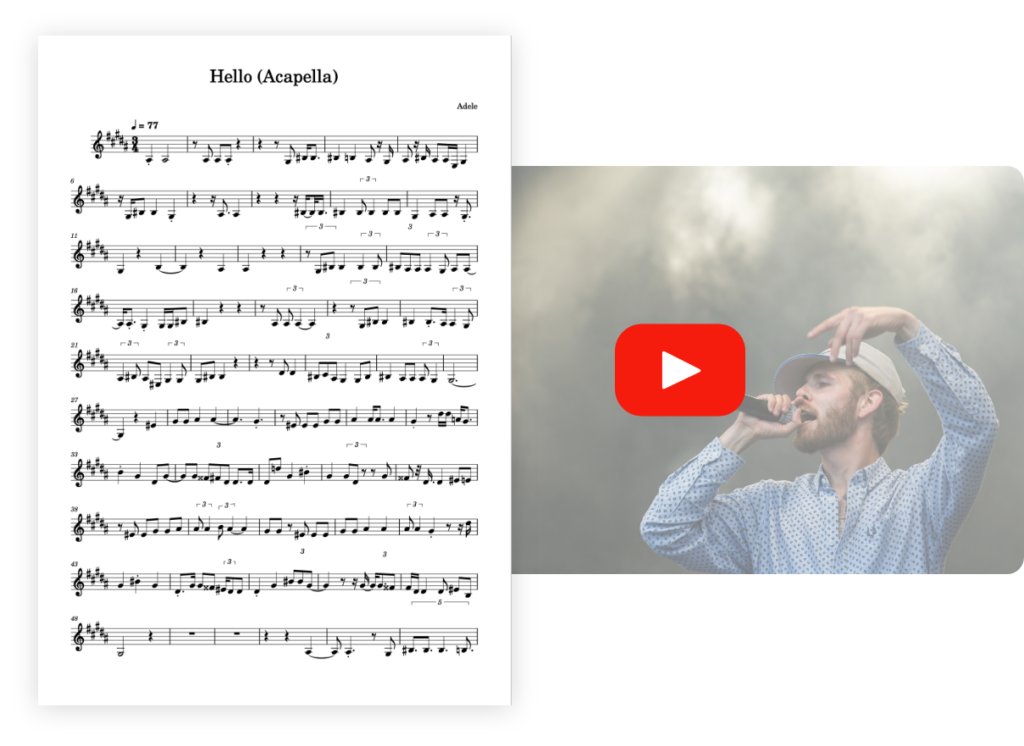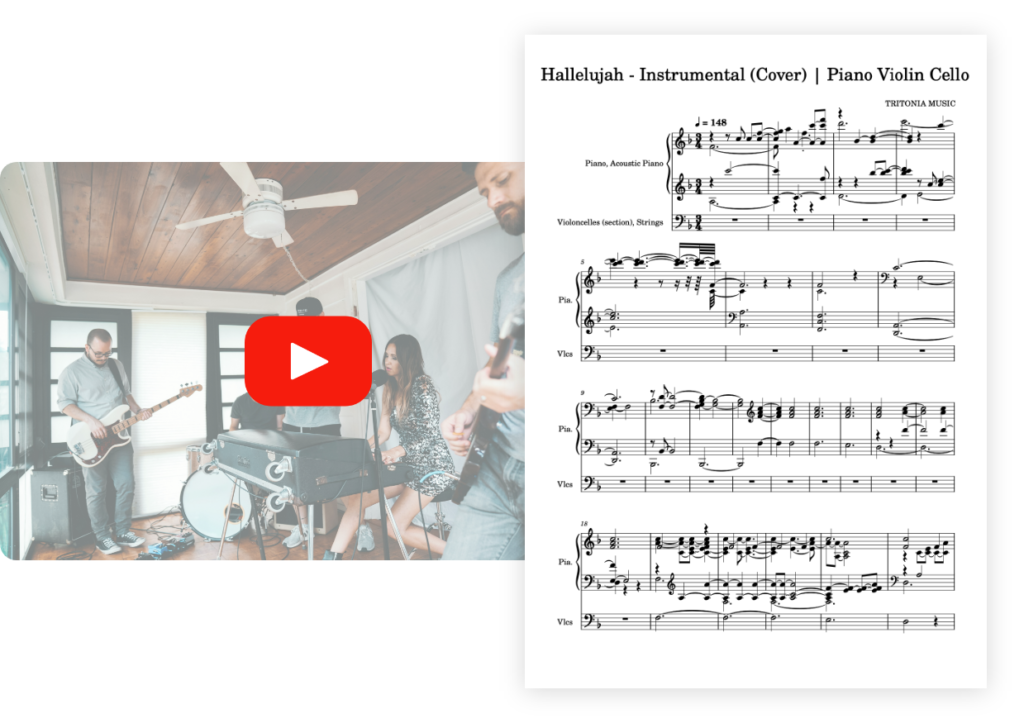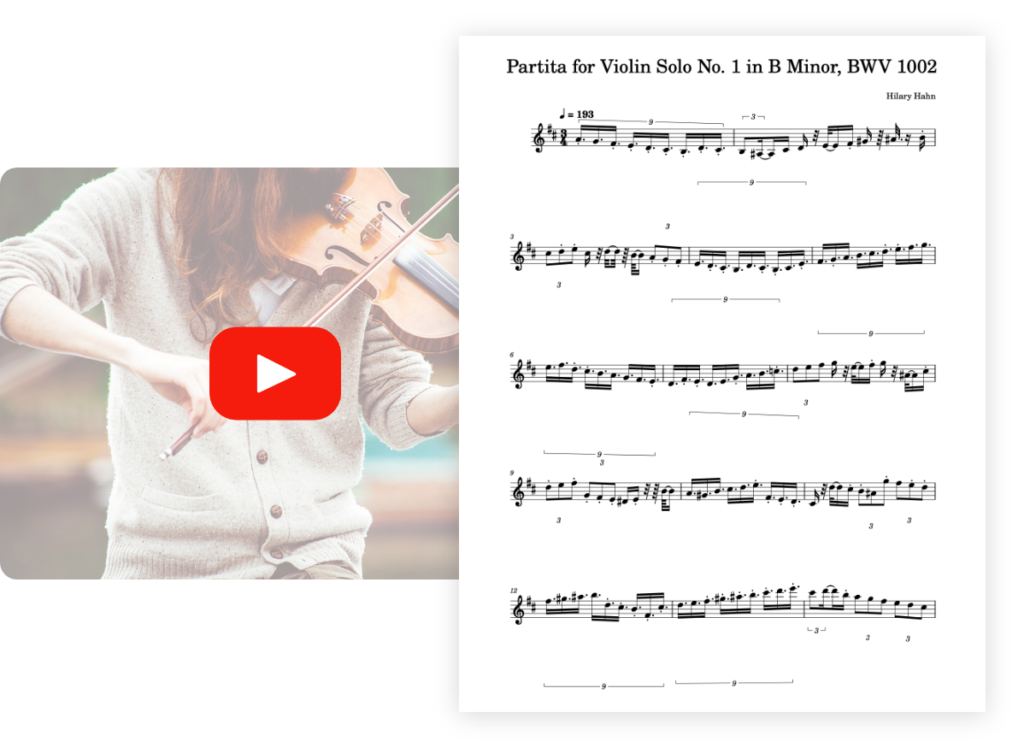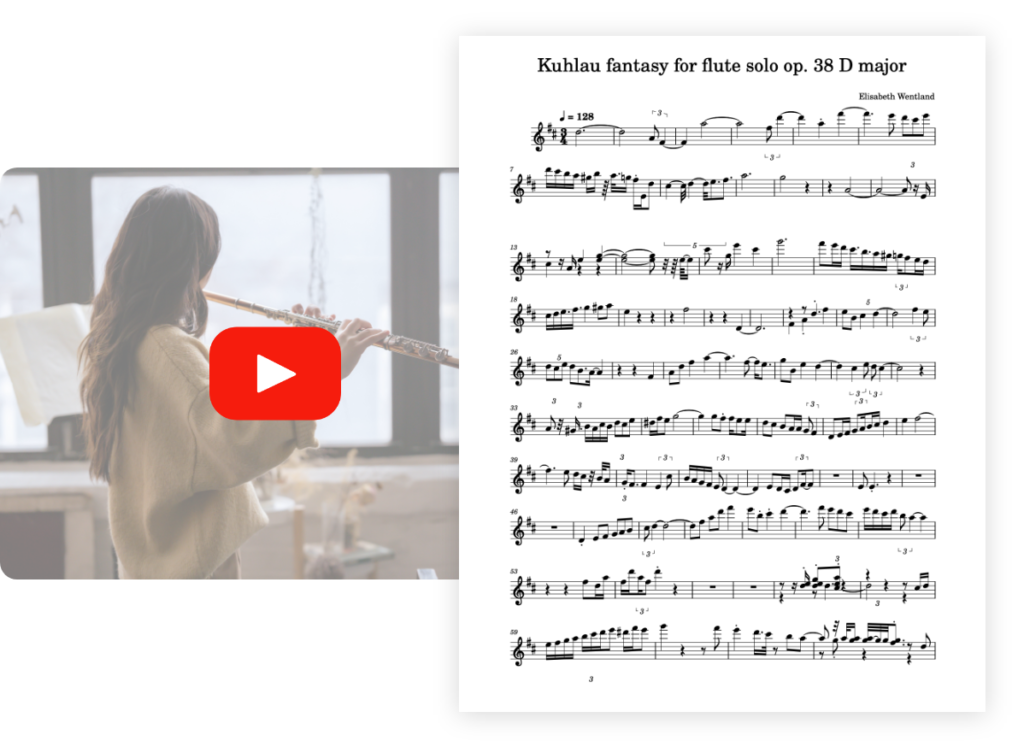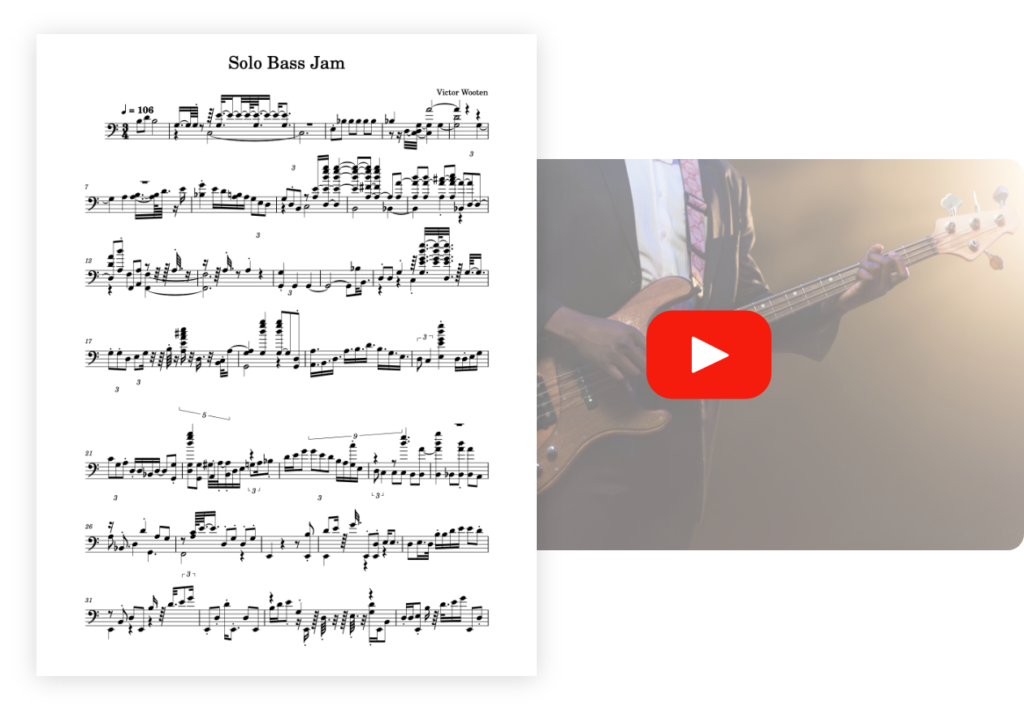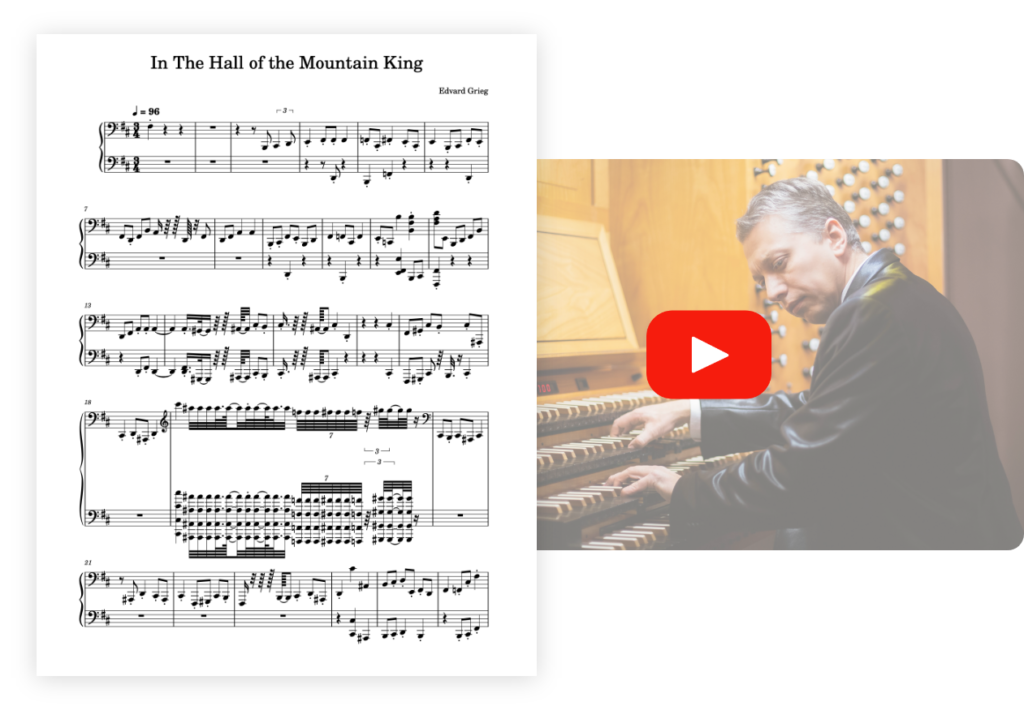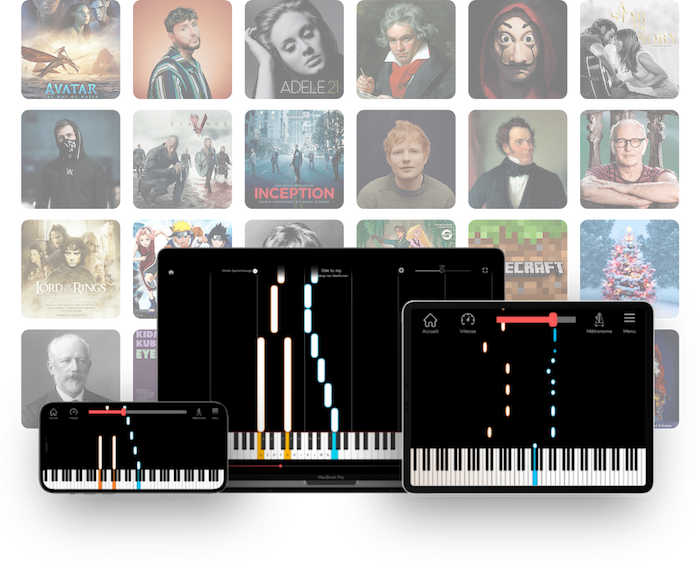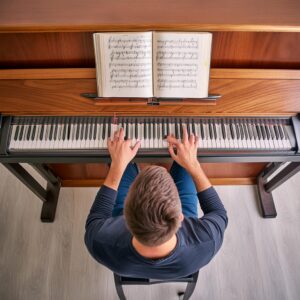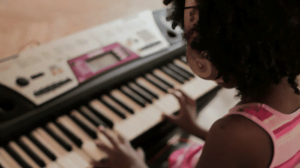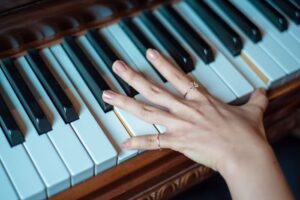What is Pachelbel’s Canon?
Pachelbel’s Canon is a four-beat classical music composition created around 1680 and composed of two movements: a canon and a jig for 3 violins and basso continuo.
This song has the particularity to be interpreted in several different ways (light, majestic, solemn, fast, …).
The work, originally polyphonic, progressively abandons this character to be more and more adapted and played independently for each instrument. Thus the piano version available on La Touche Musicale app is part of this progressive mutation.
Pachelbel’s Canon is nowadays often used for wedding march accompaniment.
Who composed Canon ?
The creator of the work Canon is Johann Pachelbel, a German composer and organist belonging to the Baroque period, born in 1653 in Nuremberg and died in 1706. He is today one of the most famous composers of classical music in the world, thanks in particular to the fame of his Canon. In fact, he would have had a perfect place in our top 30 of the most famous pianists of all time.

Who was Johann Pachelbel ?
Johann Pachelbel was a German composer and organist.
After studying in Nuremberg, he left for Vienna and settled there in 1673. Vienna was at that time the capital of the empire and had a very developed cultural activity. Music was then a very fashionable activity.
He became a well-known musician in the circles of patrons and court nobles.
He composes a lot for the Church, with whom he has a contract. He makes a lot of choral preludes which he composes for the service. Each year, he must compose a masterpiece for the Church in order to demonstrate his skills and progress as a composer and organist. It’s within this context that he composes his famous Canon in D.
Why did Pachelbel write his Canon?
Working for the Church at the end of the 17th century, Pachelbel had to compose every year religious works to accompany the choirs. The Church demanded that the work of the current year be always more masterful than those of previous years, making the task more and more arduous.
It was during this period that Pachelbel wrote his Canon, which would later become very famous.
3 little-known anecdotes about Pachelbel’s Canon
1 – A very late notoriety
Pachelbel’s Canon in D did not become world-famous until the late 1960s, almost 300 years after its creation! Its popularity increased dramatically when an album recorded by the Jean-François Paillard Chamber Orchestra in 1969, featuring this composition, was released. This version, with a much more modern sound than the original, has indeed considerably increased the public’s attraction for Pachelbel’s Canon. At that time, it was not common for such modern arrangements to be made to classical music.
Since the beginning of the 1970s, the song has therefore been the subject of numerous covers, arrangements and interpretations, for all types of instruments and musical genres. From modern transcriptions for choir or orchestra to adaptations for rock, dance, variety and even hip-hop genres, the famous classical music has become a universal cultural object since the 1970s.

2 – From the Church to Japanese animation
Pachelbel’s Canon was even taken up by the Japanese to give emotional strength to their animation works. You can for example find it in the original soundtrack of Neon Genesis Evangelion, a very popular anime in Japan, but also in France.
On several occasions, the classic composition is played in the anime and adds a touch of nostalgia and power to the film sequences.
It’s far from the atmosphere of the original place for which it was created: the Church.

3 – A direct influence on the work of Johann Sebastian Bach
Johann Pachelbel befriended Johann Sebastian Bach’s father, Johann Ambrosius Bach, when he lived in Eisenach in 1677. He gives music lessons to his son, Johann Christoph Bach, Johann Sebastian’s elder brother. He even became the godfather of the family’s children.
As a child, Johann Sebastian Bach heard Pachelbel’s works and teachings. It’s highly probable that Pachelbel exerted an important influence, particularly through his Canon, on the work of the famous composer. He’s the main link in the chain linking Bach to his models.




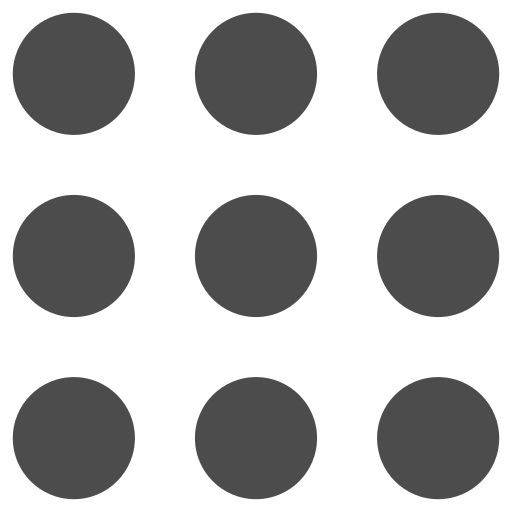
 PianoConvert
PianoConvert
 GuitarConvert
GuitarConvert
 SingConvert
SingConvert
 BandConvert
BandConvert
 DrumConvert
DrumConvert
 ViolinConvert
ViolinConvert
 SaxConvert
SaxConvert
 FluteConvert
FluteConvert
 BassConvert
BassConvert
 TrumpetConvert
TrumpetConvert
 OrganConvert
OrganConvert
 PianoGo
PianoGo


